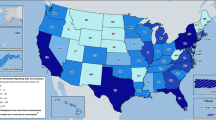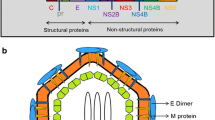Abstract
Zika virus infections are an emerging problem, with the virus being primarily transmitted to humans via the bite of Aedes mosquito. Infection with the Zika virus may be difficult to distinguish from other viral infections, such as dengue, yellow fever and West Nile virus infections. The predominant feature of Zika virus infection is an erythematous maculopapular rash ± a low-grade fever. Although the symptoms of Zika virus infection are generally mild in adults, Zika virus infection during pregnancy is associated with severe consequences to the fetus, including fetal death and microencephaly. The management of Zika virus infections is limited to symptomatic therapies, with the prevention of mosquito bites being an important method to reduce the risk of infection in pregnant women in areas where the Zika virus is endemic.

Similar content being viewed by others
References
Ginier M, Neumayr A, Gunther S, et al. Zika without symptoms in returning travellers: what are the implications? Travel Med Infect Dis. 2016;14(1):16–20.
Centers for Disease Control and Prevention. Zika virus. https://www.cdc.gov/zika/index.html. Accessed 27 Oct 2017.
Duffy MR, Chen TH, Hancock WT, et al. Zika virus outbreak on Yap Island, Federated States of Micronesia. N Engl J Med. 2009;360(24):2536–43.
Cao-Lormeau VM, Musso D. Emerging arboviruses in the Pacific. Lancet. 2014;384(9954):1571–2.
He A, Brasil P, Siqueira AM, et al. The emerging Zika virus threat: a guide for dermatologists. Am J Clin Dermatol. 2017;18(2):231–6.
Weaver SC, Lecuit M. Chikungunya virus and the global spread of a mosquito-borne disease. N Engl J Med. 2015;372(13):1231–9.
Simmons CP, Farrar JJ, Nguyen VV, et al. Dengue. N Engl J Med. 2012;366(15):1423–32.
Sampathkumar P. West Nile virus: epidemiology, clinical presentation, diagnosis, and prevention. Mayo Clin Proc. 2003;78(9):1137–43.
Pinto Junior VL, Luz K, Parreira R, et al. Zika virus: a review to clinicians. Acta Med Port. 2015;28(6):760–5.
Fagbami A. Epidemiological investigations on arbovirus infections at Igbo-Ora, Nigeria. Trop Geogr Med. 1977;29(2):187–91.
Simpson DI. Zika virus infection in man. Trans R Soc Trop Med Hyg. 1964;58:335–8.
Brasil P, Pereira JP Jr, Moreira ME, et al. Zika virus infection in pregnant women in Rio de Janeiro. N Engl J Med. 2016;375(24):2321–34.
Rasmussen SA, Jamieson DJ, Honein MA, et al. Zika virus and birth defects: reviewing the evidence for causality. N Engl J Med. 2016;374(20):1981–7.
Schuler-Faccini L, Ribeiro EM, Feitosa IM, et al. Possible association between Zika virus infection and microcephaly: Brazil, 2015. MMWR Morb Mortal Wkly Rep. 2016;65(3):59–62.
Moore CA, Staples JE, Dobyns WB, et al. Characterizing the pattern of anomalies in congenital Zika syndrome for pediatric clinicians. JAMA Pediatr. 2017;171(3):288–95.
Cao-Lormeau VM, Blake A, Mons S, et al. Guillain–Barre syndrome outbreak associated with Zika virus infection in French Polynesia: a case–control study. Lancet. 2016;387(10027):1531–9.
Author information
Authors and Affiliations
Consortia
Ethics declarations
Conflict of interest
The article was adapted from the American Journal of Clinical Dermatology 2017;18(2):231:6 [5] by employees of Adis/Springer, who are responsible for the article content and declare no conflicts of interest.
Funding
The preparation of this review was not supported by any external funding.
Rights and permissions
About this article
Cite this article
Adis Medical Writers. Consider whether Zika virus infection is the underlying cause when at-risk individuals present with maculopapular rash. Drugs Ther Perspect 34, 34–37 (2018). https://doi.org/10.1007/s40267-017-0464-0
Published:
Issue Date:
DOI: https://doi.org/10.1007/s40267-017-0464-0




